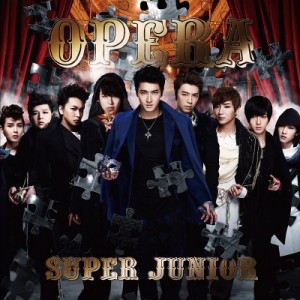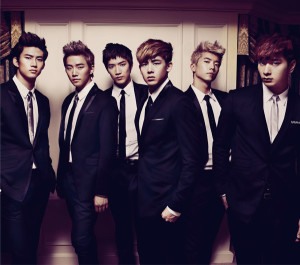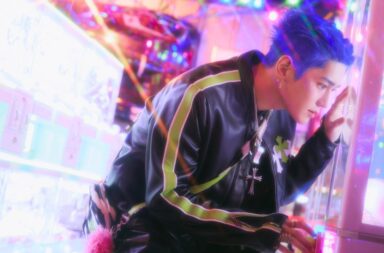 They say “when in Rome, do as the Romans do.” When promoting in Japan, some K-pop artists keep that age old adage in mind, channeling their inner Tokyoites and creating music that sounds like what plays in the crowded shops of Harajuku and the closing credits of InuYasha; whereas others stick to what they know, essentially releasing K-pop in Japanese. It begs a few questions: who uses what approach and which one is the best?
They say “when in Rome, do as the Romans do.” When promoting in Japan, some K-pop artists keep that age old adage in mind, channeling their inner Tokyoites and creating music that sounds like what plays in the crowded shops of Harajuku and the closing credits of InuYasha; whereas others stick to what they know, essentially releasing K-pop in Japanese. It begs a few questions: who uses what approach and which one is the best?
KARA must have had a Pixy Stick or 10 before recording their 2011 Japanese single, “Go Go Summer.” This uptempo Eurobeat track is sugary sweet and hyperactive, a combination oh so common in J-pop. One listen and you’re feeling the phantom sweat from a spirited Dance Dance Revolution session: it would be at least a standard-level challenge.
And it’s no mistake that the song would conjure images of a video game or synchronized dancing. Much of Japanese pop is made specifically for the purpose of serving as the soundtrack to your arcade adventures; and “Go Go Summer” was composed with Para Para, a type of Japanese-originated line dancing, in mind. KARA’s Japanese releases are tailored to that market and this special attention to audience has paid off for the band, which is one of the biggest K-pop acts in Japan.
 Juxtapose Kara’s situation against that of Super Junior, who’s offered up one album and six singles in the island nation, all of which were Japanese translations of their South Korean releases. Super Junior didn’t bother crafting bespoke tunes to fit Japanese ears. Sorry, sorry, Japan. And this lack of specialization is reflected in poor album sales, right? Well, no. Actually, Super Junior is one of the best-selling K-pop acts in Japan, also.
Juxtapose Kara’s situation against that of Super Junior, who’s offered up one album and six singles in the island nation, all of which were Japanese translations of their South Korean releases. Super Junior didn’t bother crafting bespoke tunes to fit Japanese ears. Sorry, sorry, Japan. And this lack of specialization is reflected in poor album sales, right? Well, no. Actually, Super Junior is one of the best-selling K-pop acts in Japan, also.
Since SM Entertainment’s first foray into the Japanese market in 2001 with BoA, SM artists like TVXQ, Girls Generation, SHINee, and Super Junior release Japanese language K-pop that is consistent with their own styles, as opposed to J-pop, banking on Japan being fascinated by art that shares some similarities, yet is very different from its own, and K-pop’s ability to offer things not found in J-pop. For example, Girls Generation has polish, glamor, and maturity that many J-pop girl groups don’t. AKB48, a massive collective of baby-women/coquettes (and a few actual children) in schoolgirl clothes, chosen by public vote, rock, paper, scissor tournaments, and other means having little to do with talent, who perform simplistic choreographed dances and sound like your neighbor’s daughter in a middle school chorus when they sing their hit songs, is the most popular girl group in Japan and the anti-Girls Generation in some ways.
While SM’s golden girls have absolutely no chance of knocking AKB48 off of their perch at the summit of J-pop, Girls Generation fans appreciate having a pop alternative in the diverse Japanese music market. So, Girls Generation sticks to what it knows, because others are happy to know it too. TVXQ has done similar for a long time, to tremendous success. Of course, if the Japanese public tires of K-pop artists interjecting new aesthetics into the scene, then it would be curtains for SM (unless they changed their approach). SHINee’s single, “Fire,” is a good example of a Japanese SM release that sounds like it could have been recorded in Korean just as easily.
[youtube http://www.youtube.com/watch?v=BWsSiuU0ThY]On the other hand, artists like KARA, 2PM, MBLAQ, U-KISS, FT Island, and D-LITE (a.k.a. Daesung from BIGBANG) have achieved success in Japan by making Japanese music. This approach—assimilating, rather than differentiating—demonstrates awareness that fluency in the language and culture of Japan translates to popularity for foreign artists, and that K-pop may not enjoy cultural currency in Japan forever, but Japanese music will most likely always have a place in its own country’s entertainment market. These K-pop acts have managed to make quality J-pop that sometimes exceeds the creativity and artistry of their South Korean releases.
[youtube http://www.youtube.com/watch?v=F7HNdG07CtI]U-KISS must have gone halfsies with KARA on that bag of Pixy Stix because their song, “Forbidden Love,” track three on the most fat-burning workout playlist ever, manages to surpass “Go Go Summer” in hyperactivity. A far cry from the smooth “Stop Girl.” (Notice the proto-“Standing Still” dance moves and suits in the video.) D-LITE recently released an album of covers of popular Japanese songs in what appears to be an effort to get in good with consumers. FT Island‘s brand of pop-rock fits well into the J-rock scene. KARA and 2PM release great J-pop that incorporates their own sounds (especially 2PM—you see a sweet integration of the “Don’t Stop, Can’t Stop”-era sound with their Japanese songs), while MBLAQ’s and U-KISS’ J-pop is stunningly different from their K-pop material.
 It will be interesting to see if one approach edges out the other in the coming years. With K-pop in Japan having peaked in 2011 in terms of sales (and hubbub), selling J-pop may be the better money-making venture in the long run. SM Entertainment reported a 70% loss in revenue for the first half of 2013, in comparison to 2012, so this hypothesis could be borne out sooner than later. (Of course, the Japanese Yen has been devalued over the last year, which is great news for consumers, but most likely played a huge role in SM’s tumble.)
It will be interesting to see if one approach edges out the other in the coming years. With K-pop in Japan having peaked in 2011 in terms of sales (and hubbub), selling J-pop may be the better money-making venture in the long run. SM Entertainment reported a 70% loss in revenue for the first half of 2013, in comparison to 2012, so this hypothesis could be borne out sooner than later. (Of course, the Japanese Yen has been devalued over the last year, which is great news for consumers, but most likely played a huge role in SM’s tumble.)
K-pop acts and companies will need to continue finding ways to create high quality music while responding to market pressures, a balancing act that hopefully will push K/J-pop to new heights, both financially and artistically.
In the meantime, if you’re a K-pop fan looking to check out what J-pop has to offer, make sure to check out Miyoko’s J-pop guide for K-poppers.
(YouTube[1][2][3][4][5][6][7][8][9][10], livedoorNEWS[1][2], Record China[1], Images via Universal Music Group, SM Entertainment, DSP Media, JYP Entertainment)


